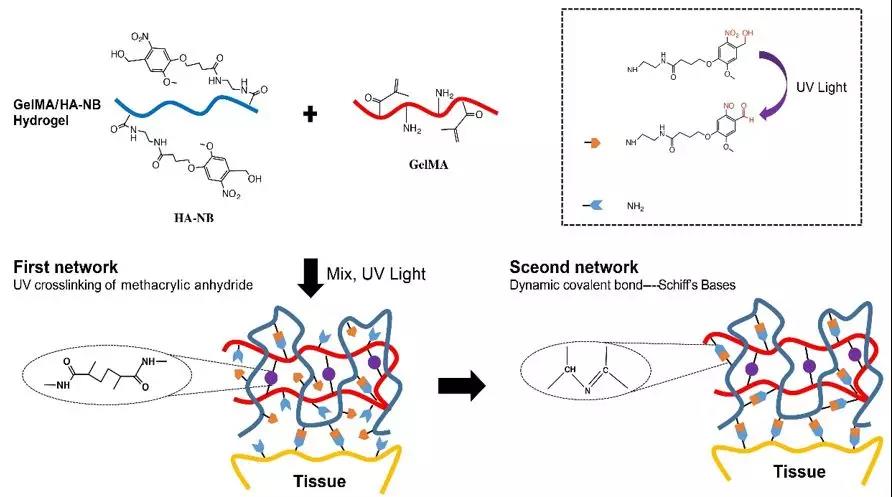A bio-glue to patch “cuts” in heart surgery
A UV-activated exceedingly adhesive hemostatic biomimetic hydrogel stops high-pressure bleeding of beating heart in 20s without suture.
Yesterday we reported a recent work from the Department of Chemistry on flexible zeolite-cotton fiber to stop external bleeding. To treat internal bleeding, the research team led by Prof. OUYANG Hongwei from the School of Medicine designs a biomimetic tissue adhesive product that can polymerize and adhere within seconds, and strongly bond to wet biological tissue surfaces after UV photo-activation. Their relevant findings are published online in an article entitled “A strongly adhesive hemostatic hydrogel for the repair of arterial and heart bleeds” in the journal of Nature Communications.
Rapid hemostasis and wound sealing are a tremendous clinical need. Uncontrollable bleeding following trauma or occurring during surgery is a leading cause of global mortality every year. Meanwhile, the consumption of hemostatic agents is staggering due to their inability to control bleeding quickly and effectively. Clinically used hemostatic methods and products poorly control hemorrhaging from traumatic arterial and cardiac wounds because of their weak adhesion to wet and mobile tissues. The ideal hemostatic material should be equipped with fast adhesion in the presence of continuous blood flow, strong adhesion between wet tissue walls and surfaces, high mechanical strength to maintain blood pressure, and good biocompatibility for tissue regeneration. No such material has yet been developed to cater to the requirements for bonding wet and dynamic tissue surfaces.
This product design is inspired by consideration of the extracellular matrix composition of biological connective tissues. The matrix gel hydrogel bio-adhesive used here is comprised of methacrylated gelatin (GelMA), N-4-butanamide (NB) linked to the glycosaminoglycan hyaluronic acid (HA-NB) with the polymerization initiator lithium phenyl-2,4,6-trimethylbenzoylphosphinate (LAP). The chosen ratio of GelMA: HA-NB in our candidate product is similar to that of collagens to glycosaminoglycans of human connective tissue.

This biomacromolecule-based matrix hydrogel can undergo rapid gelling and fixation to adhere and seal bleeding arteries and cardiac walls after UV light irradiation. These repairs can withstand up to 290 mm Hg blood pressure, significantly higher than blood pressures in most clinical settings (systolic BP 60–160 mm Hg). Most importantly, the hydrogel can stop high-pressure bleeding from pig carotid arteries with 4~ 5 mm-long incision wounds and from pig hearts with 6 mm diameter cardiac penetration holes within 20 seconds. Treated pigs have survived after hemostatic treatments with this hydrogel, which is well-tolerated and appears to offer significant clinical advantage as a traumatic wound sealant.
It is hoped that with a UV flashlight or an optical fiber, this material can potentially be used for completely sutureless hemostasis and sealing, thus becoming a promising bio-glue for use in surgery and emergency hemostasis.
“This material is a perfect solution to a series of challenges related to the hemostasis and closure of medical hydrogel in the dynamic, wet and hemorrhaging wound interface in three dimensions: interface cohesion, the gelling speed and the gelling principle,” remarked LIU Changsheng, a biomaterial professor at East China University of Science and Technology.
“This research is groundbreaking in that the introduction of a GelMA component into the hydrogel maintains its capacity for wet wound sealing and accelerates polymerization by an order of magnitude, thus greatly increasing the clinical utility of this wound sealing hydrogel,” said CHEN Huiwen, a cardiologist in Shanghai Children’s Medical Center.